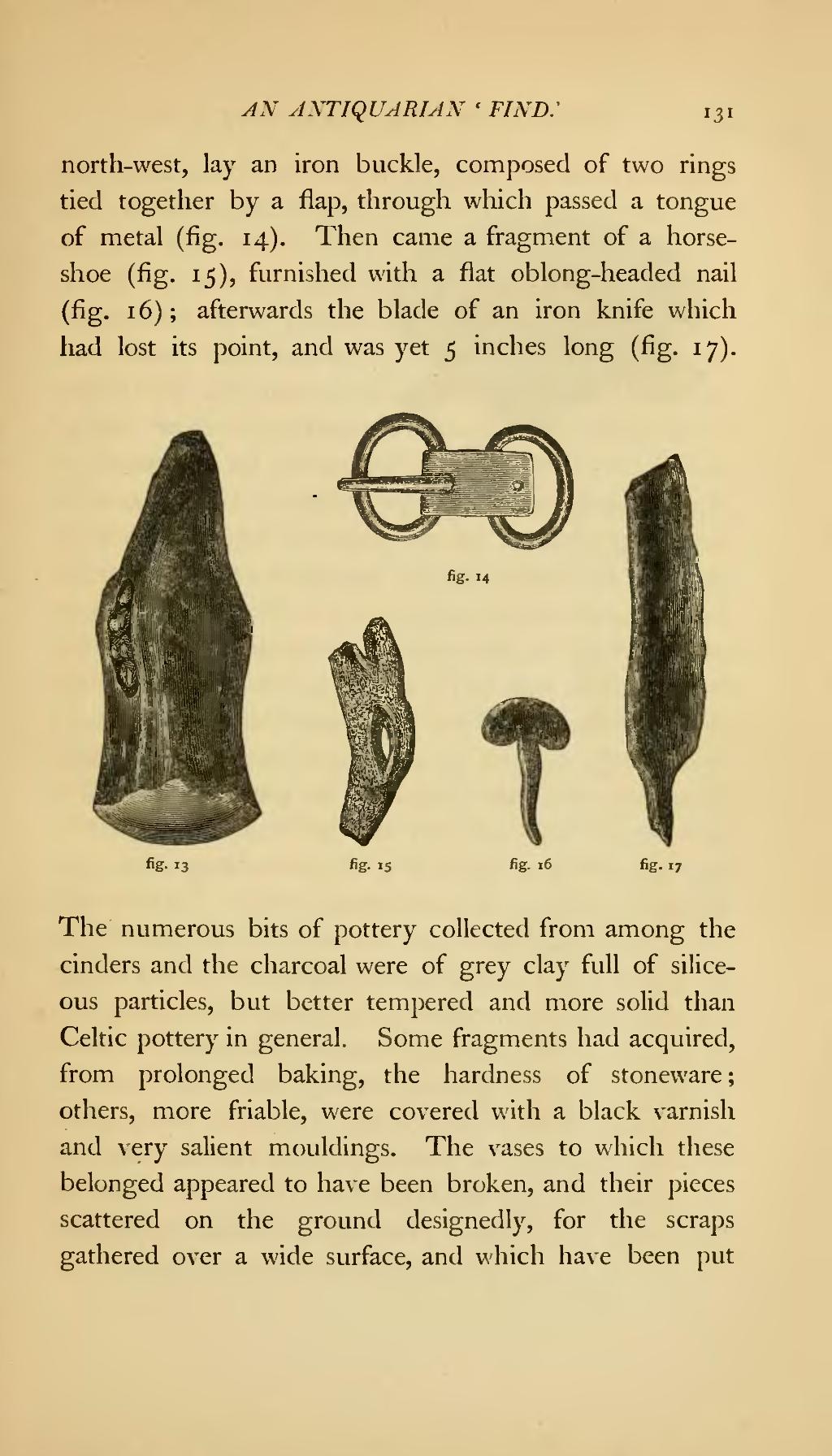north-west, lay an iron buckle, composed of two rings tied together by a flap, through which passed a tongue of metal (fig. 14). Then came a fragment of a horseshoe (fig. 15), furnished with a flat oblong-headed nail (fig. 16); afterwards the blade of an iron knife which had lost its point, and was yet 5 inches long (fig. 17).

The numerous bits of pottery collected from among the cinders and the charcoal were of grey clay full of siliceous particles, but better tempered and more solid than Celtic pottery in general. Some fragments had acquired, from prolonged baking, the hardness of stoneware; others, more friable, were covered with a black varnish and very salient mouldings. The vases to which these belonged appeared to have been broken, and their pieces scattered on the ground designedly, for the scraps gathered over a wide surface, and which have been put
